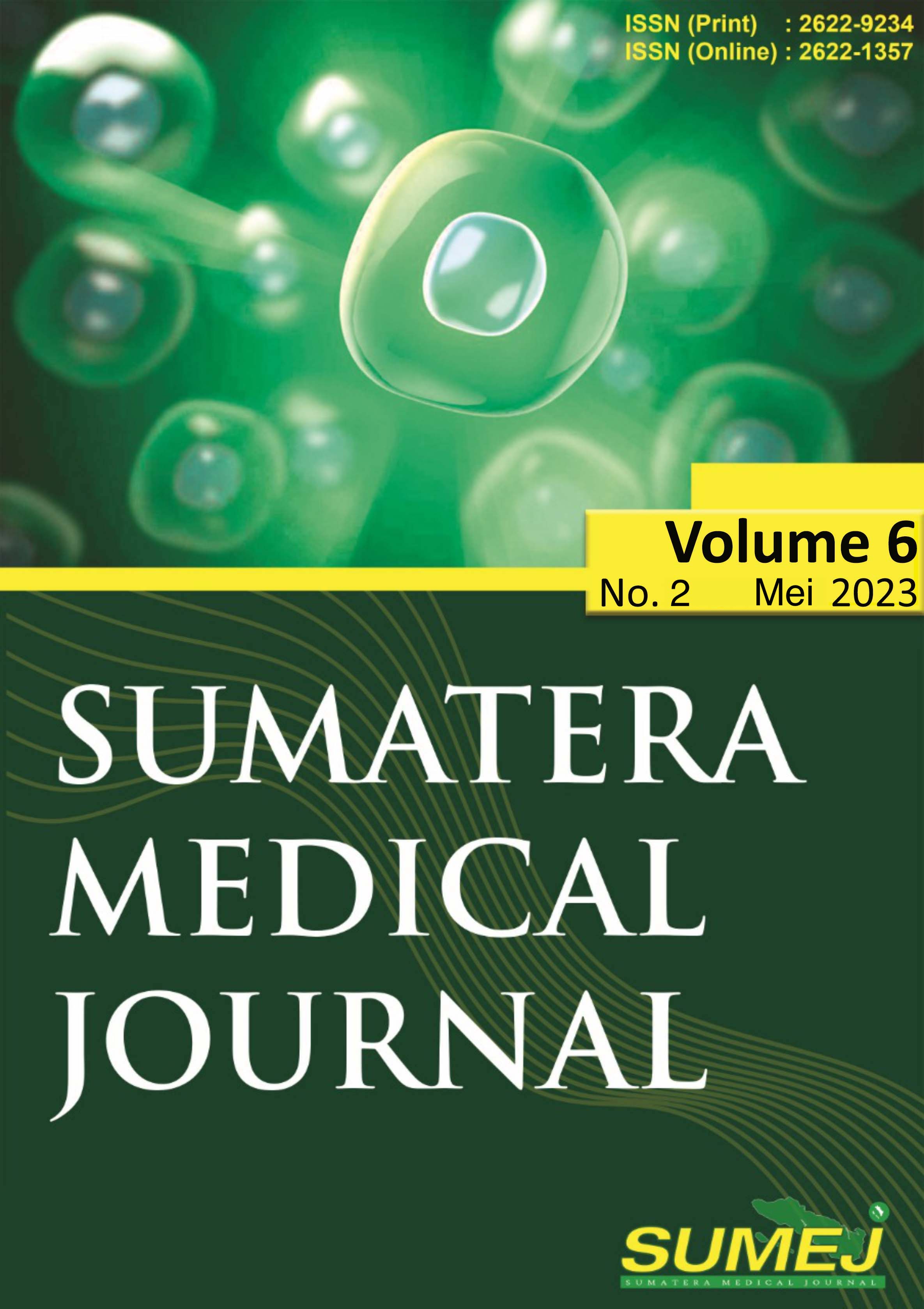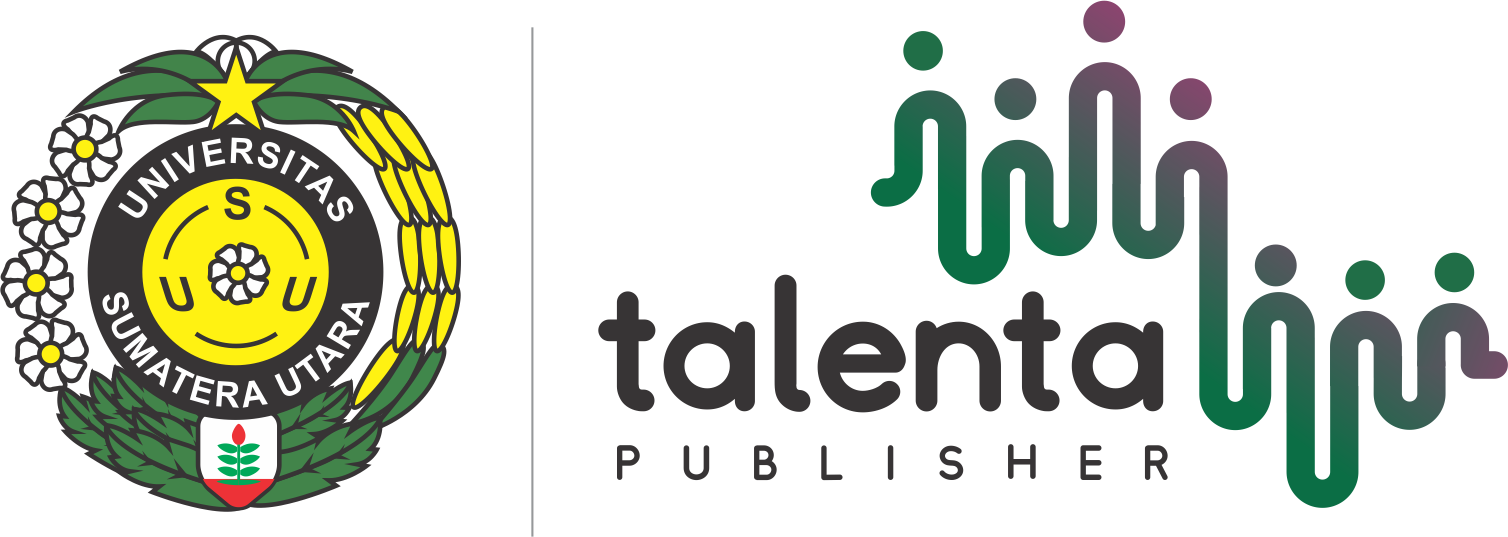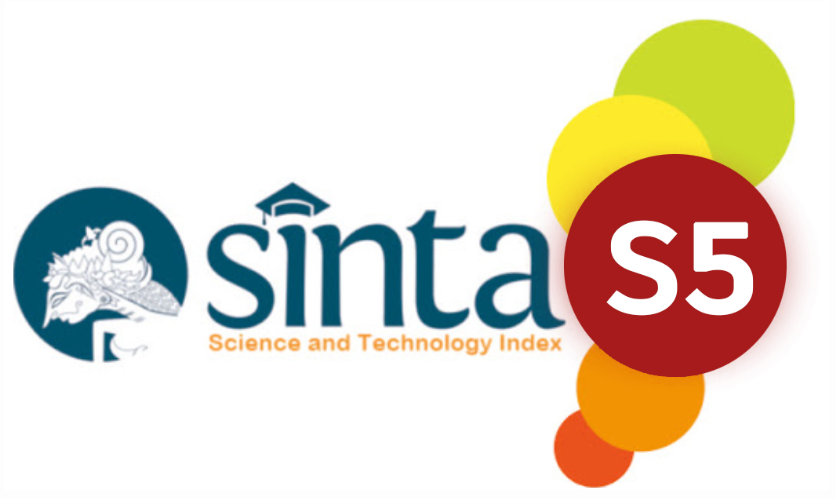Diets That Have Potential to Stimulate the Hypothalamic-Pituitary-Adrenal (HPA) Axis in Sprague Dawley Rats
DOI:
https://doi.org/10.32734/sumej.v6i2.11650Keywords:
adrenocorticotrophic hormone (ACTH), corticosterone, diet, high-fat diet, high-performance liquid chromatography (HPLC), high-sugar diet, hypothalamic-pituitary-adrenal (hpa) axisAbstract
Background: The pituitary gland is the master gland regulating body hormones. From the anterior pituitary’s corticotrophs, adrenocorticotrophic hormone (ACTH) is secreted and influences corticosterone production in rodents via the hypothalamic–pituitary–adrenal (HPA) axis. ACTH and corticosterone are commonly used as hormonal stress markers. Disturbances in ACTH and corticosterone are seen in diseases like Addison’s disease, Cushing’s syndrome, and metabolic syndrome. Objective: To observe which diet induces the most and least stress on Sprague Dawley rats’ physiology. Methods: Thirty-five Sprague Dawley rats were divided into five groups (n=7) and given different diets (control, high-fat, high-protein, high-sugar, and high-starch) with tap water ad libitum. After eight weeks, blood samples were collected and serum separated. ACTH and corticosterone were extracted, purified, identified, and quantified using High-Performance Liquid Chromatography (HPLC) with photodiode array (PDA) analysis. Results: High-sugar diet led to the highest ACTH blood level. Both high-fat and high-sugar diets showed the highest corticosterone peaks. Conclusion: Consumption of high-fat and high-sugar diets for eight weeks is suggested to induce physiological and metabolic stress in Sprague Dawley rats, as evidenced by HPA axis activation.
Downloads
References
Nakakura T, Nemoto T, Suzuki T, Asano-Hoshino A, Tanaka H, Arisawa K, et al. Adrenalectomy facilitates ATAT1 expression and a-tubulin acetylation in ACTH-producing corticotrophs. Cell Tissue Res. 2016;366(2):363–70.
Yang Y, Harmon CM. Molecular determinants of ACTH receptor for ligand selectivity. Mol Cell Endocrinol. 2020;503:110688.
Clark AJL, Chan L. Stability and turnover of the ACTH receptor complex. Front Endocrinol (Lausanne). 2019;10:491.
Lightman SL, Birnie MT, Conway-Campbell BL. Dynamics of ACTH and cortisol secretion and implications for disease. Endocr Rev. 2020;41(3):bnaa002.
Deng Q, Riquelme D, Trinh L, Low MJ, Tomic M, Stojilkovic S, et al. Rapid glucocorticoid feedback inhibition of ACTH secretion involves ligand-dependent membrane association of glucocorticoid receptors. Endocrinology. 2015;156(9):3215–27.
Dunlavey CJ. Introduction to the hypothalamic-pituitary-adrenal axis: healthy and dysregulated stress responses, developmental stress and neurodegeneration. J Undergrad Neurosci Educ. 2018;16(2):59–60.
Allen MJ, Sharma S. Physiology, adrenocorticotropic hormone (ACTH). In: StatPearls. Treasure Island (FL): StatPearls Publishing; 2023.
Aragao-Santiago L, Gomez-Sanchez CE, Mulatero P, Spyroglou A, Reincke M, Williams TA. Mouse models of primary aldosteronism: from physiology to pathophysiology. Endocrinology. 2017;158(12):4129–38.
Jimeno B, Hau M, Verhulst S. Corticosterone levels reflect variation in metabolic rate, independent of 'stress'. Sci Rep. 2018;8(1):13020.
Neuman-Lee LA, Hudson SB, Webb AC, French SS. Investigating the relationship between corticosterone and glucose in a reptile. J Exp Biol. 2020;223(Pt 2):jeb203885.
Jiang Y, Botchway BOA, Hu Z, Fang M. Overexpression of SIRT1 inhibits corticosterone-induced autophagy. Neuroscience. 2019;411:11–22.
Kinlein SA, Phillips DJ, Keller CR, Karatsoreos IN. Role of corticosterone in altered neurobehavioral responses to acute stress in a model of compromised hypothalamic-pituitary-adrenal axis function. Psychoneuroendocrinology. 2019;102:248–55.
Lam VYY, Raineki C, Wang LY, Chiu M, Lee G, Ellis L, et al. Role of corticosterone in anxiety and depressive-like behavior and HPA regulation following prenatal alcohol exposure. Prog Neuropsychopharmacol Biol Psychiatry. 2019;90:1–15.
Robertson RC, Seira Oriach C, Murphy K, Moloney GM, Cryan JF, Dinan TG, et al. Omega-3 polyunsaturated fatty acids critically regulate behaviour and gut microbiota development in adolescence and adulthood. Brain Behav Immun. 2017;59:21–37.
Foroozan P, Koushkie Jahromi M, Nemati J, Sepehri H, Safari MA, Brand S. Probiotic supplementation and high-intensity interval training modify anxiety-like behaviors and corticosterone in high-fat diet-induced obesity mice. Nutrients. 2021;13(6):1762.
Serradell A, Torrecillas S, Makol A, Valdenegro V, Fernández-Montero A, Acosta F, et al. Prebiotics and phytogenics functional additives in low fish meal and fish oil based diets for European sea bass (Dicentrarchus labrax): effects on stress and immune responses. Fish Shellfish Immunol. 2020;100:219–29.
Lechner K, von Schacky C, McKenzie AL, Worm N, Nixdorff U, Lechner B, et al. Lifestyle factors and high-risk atherosclerosis: pathways and mechanisms beyond traditional risk factors. Eur J Prev Cardiol. 2020;27(4):394–406.
St-Onge MP, Mikic A, Pietrolungo CE. Effects of diet on sleep quality. Adv Nutr. 2016;7(5):938–49.
Shin AC, Balasubramanian P, Suryadevara P, Zyskowski J, Herdt TH, MohanKumar SMJ, et al. Metformin effectively restores the HPA axis function in diet-induced obese rats. Int J Obes (Lond). 2021;45(2):383–95.
Carreiro AL, Dhillon J, Gordon S, Higgins KA, Jacobs AG, McArthur BM, et al. The macronutrients, appetite, and energy intake. Annu Rev Nutr. 2016;36:73–103.
Leroy F, Cofnas N. Should dietary guidelines recommend low red meat intake? Crit Rev Food Sci Nutr. 2020;60(16):2763–72. Available from: https://doi.org/10.1080/10408398.2019.1657063.
Biobaku F, Ghanim H, Batra M, Dandona P. Macronutrient-mediated inflammation and oxidative stress: relevance to insulin resistance, obesity, and atherogenesis. J Clin Endocrinol Metab. 2019;104(12):6118–28. Available from: https://doi.org/10.1210/jc.2019-00550.
Grosser K, van Dam NM. A straightforward method for glucosinolate extraction and analysis with high-pressure liquid chromatography (HPLC). J Vis Exp. 2017;(121):55425. Available from: https://doi.org/10.3791/55425.
Nishizaki Y, Sato-Masumoto N, Yokota A, Mikawa T, Nakashima K, Yamazaki T, et al. HPLC/PDA determination of carminic acid and 4-aminocarminic acid using relative molar sensitivities with respect to caffeine. Food Addit Contam Part A Chem Anal Control Expo Risk Assess. 2018;35(5):838–47. Available from: https://doi.org/10.1080/19440049.2018.1445996.
Kumar S, Singh R, Gajbhiye N, Dhanani T. Extraction optimization for phenolic- and withanolide-rich fractions from Withania somnifera roots: identification and quantification using a reversed-phase HPLC-PDA method. J AOAC Int. 2018;101(6):1773–80. Available from: https://doi.org/10.5740/jaoacint.18-0080.
Liu J, Hefni ME, Witthöft CM. Characterization of flavonoid compounds in common Swedish berry species. Foods. 2020;9(3):358. Available from: https://doi.org/10.3390/foods9030358.
Azwan K, Mona R, Firdous J, David PR, Muhamad N. A whey-based, high-protein diet promotes the best body weight and blood sugar control in male Sprague Dawley rats. RSU Int Res Conf Sci Technol. 2021:68–74.
Viljoen FP, Brand L, Smit EJ. An optimized method for the analysis of corticosterone in rat plasma by UV-HPLC. Med Technol SA. 2012;26(2):39–42. Available from: https://repository.nwu.ac.za/handle/10394/14872.
Tan WS, Tan SY, Henry CJ. Ethnic variability in glycemic response to sucrose and isomaltulose. Nutrients. 2017;9(4):347. Available from: https://doi.org/10.3390/nu9040347.
Mercau ME, Repetto EM, Perez MN, Martinez Calejman C, Sanchez Puch S, Finkielstein CV, et al. Moderate exercise prevents anterior pituitary gland remodeling in diet-induced insulin resistance in rats. Endocrinology. 2016;157(3):1135–45. Available from: https://doi.org/10.1210/en.2015-1751.
Mercau ME, Calanni JS, Aranda ML, Caldareri LJ, Rosenstein RE, Repetto EM, et al. Melatonin prevents early pituitary dysfunction induced by sucrose-rich diets. J Pineal Res. 2019;66(2):e12545. Available from: https://doi.org/10.1111/jpi.12545.
Qian Y, Lei G, Wen L. Brain-specific deletion of TRIM13 promotes metabolic stress-triggered insulin resistance, glucose intolerance, and neuroinflammation. Biochem Biophys Res Commun. 2020;527(1):138–45. Available from: https://doi.org/10.1016/j.bbrc.2020.04.052.
Deng Q, Riquelme D, Trinh L, Low MJ, Tomic M, Stojilkovic S, et al. Rapid glucocorticoid feedback inhibition of ACTH secretion involves ligand-dependent membrane association of glucocorticoid receptors. Endocrinology. 2015;156(9):3215–27. Available from: https://doi.org/10.1210/en.2015-1265.
Harno E, Gali Ramamoorthy T, Coll AP, White A. POMC: The physiological power of hormone processing. Physiol Rev. 2018;98(4):2381–430. Available from: https://doi.org/10.1152/physrev.00024.2017.
Tsai SF, Wu HT, Chen PC, Chen YW, Yu M, Tzeng SF, et al. Stress aggravates high-fat-diet-induced insulin resistance via a mechanism that involves the amygdala and is associated with changes in neuroplasticity. Neuroendocrinology. 2018;107(2):147–57. Available from: https://doi.org/10.1159/000489180.
Lizarbe B, Soares AF, Larsson S, Duarte JMN. Neurochemical modifications in the hippocampus, cortex and hypothalamus of mice exposed to long-term high-fat diet. Front Neurosci. 2019;12:985. Available from: https://doi.org/10.3389/fnins.2018.00985.
Hryhorczuk C, Decarie-Spain L, Sharma S, Daneault C, Des Rosiers C, Alquier T, Fulton S. Saturated high-fat feeding independent of obesity alters hypothalamus–pituitary–adrenal axis function but not anxiety-like behaviour. Psychoneuroendocrinology. 2017;83:142–9. Available from: https://doi.org/10.1016/j.psyneuen.2017.06.009.
Shin AC, MohanKumar SMJ, Balasubramanian P, Sirivelu MP, Linning K, Woolcock A, et al. Responsiveness of hypothalamo-pituitary-adrenal axis to leptin is impaired in diet-induced obese rats. Nutr Diabetes. 2019;9(1):10. Available from: https://doi.org/10.1038/s41387-019-0073-7.
Boersma GJ, Tamashiro KL, Moran TH, Liang NC. Corticosterone administration in drinking water decreases high-fat diet intake but not preference in male rats. Am J Physiol Regul Integr Comp Physiol. 2016;310(8):R733–43. Available from: https://doi.org/10.1152/ajpregu.00468.2015.
Shen Y, Huang G, McCormick BP, Song T, Xu X. Effects of high-intensity interval versus mild-intensity endurance training on metabolic phenotype and corticosterone response in rats fed a high-fat or control diet. PLoS One. 2017;12(7):e0181684. Available from: https://doi.org/10.1371/journal.pone.0181684.
Soltani H, Keim NL, Laugero KD. Increasing dietary carbohydrate as part of a healthy whole food diet intervention dampens eight-week changes in salivary cortisol and cortisol responsiveness. Nutrients. 2019;11(11):2563. Available from: https://doi.org/10.3390/nu11112563.
Zhou X, Fouda S, Li D, Zhang K, Ye JM. Involvement of the autophagy-ER stress axis in high fat/carbohydrate diet-induced nonalcoholic fatty liver disease. Nutrients. 2020;12(9):2626. Available from: https://doi.org/10.3390/nu12092626.
Tomiyama AJ. Stress and obesity. Annu Rev Psychol. 2019;70:703–18. Available from: https://doi.org/10.1146/annurev-psych-010418-103211.
Shaikh SR, Shaver PR, Shewchuk BM. High fat diet dysregulates hypothalamic-pituitary axis gene expression levels which are differentially rescued by EPA and DHA ethyl esters. Mol Nutr Food Res. 2018;62(13):e1800219. Available from: https://doi.org/10.1002/mnfr.201800219.
Kendig MD, Martire SI, Boakes RA, Rooney KB. Comparable metabolic effects of isocaloric sucrose and glucose solutions in rats. Physiol Behav. 2021;229:113239. Available from: https://doi.org/10.1016/j.physbeh.2020.113239.
Castrejón-Téllez V, Villegas-Romero M, Rubio-Ruiz ME, Pérez-Torres I, Carreón-Torres E, Díaz-Díaz E, et al. Effect of a resveratrol/quercetin mixture on the reversion of hypertension induced by a short-term exposure to high sucrose levels near weaning and a long-term exposure that leads to metabolic syndrome in rats. Int J Mol Sci. 2020;21(6):2231. Available from: https://doi.org/10.3390/ijms21062231.
Rippe JM, Angelopoulos TJ. Sugars, obesity, and cardiovascular disease: results from recent randomized control trials. Eur J Nutr. 2016;55(Suppl 2):45–53. Available from: https://doi.org/10.1007/s00394-016-1344-6.
Patkar OL, Mohamed AZ, Narayanan A, Mardon K, Cowin G, Bhalla R, et al. A binge high sucrose diet provokes systemic and cerebral inflammation in rats without inducing obesity. Sci Rep. 2021;11(1):11252. Available from: https://doi.org/10.1038/s41598-021-90687-y.
Jensen T, Abdelmalek MF, Sullivan S, Nadeau KJ, Green M, Roncal C, et al. Fructose and sugar: a major mediator of non-alcoholic fatty liver disease. J Hepatol. 2018;68(5):1063–75. Available from: https://doi.org/10.1016/j.jhep.2018.01.019.
Pereira RM, Botezelli JD, da Cruz Rodrigues KC, Mekary RA, Cintra DE, Pauli JR, et al. Fructose consumption in the development of obesity and the effects of different protocols of physical exercise on the hepatic metabolism. Nutrients. 2017;9(4):405. Available from: https://doi.org/10.3390/nu9040405.
de Sousa Rodrigues ME, Bekhbat M, Houser MC, Chang J, Walker DI, Jones DP, et al. Chronic psychological stress and high-fat high-fructose diet disrupt metabolic and inflammatory gene networks in the brain, liver, and gut and promote behavioral deficits in mice. Brain Behav Immun. 2017;59:158–72. Available from: https://doi.org/10.1016/j.bbi.2016.08.021.
Woods A, Williams JR, Muckett PJ, Mayer FV, Liljevald M, Bohlooly-Y M, Carling D. Liver-specific activation of AMPK prevents steatosis on a high-fructose diet. Cell Rep. 2017;18(13):3043–51. Available from: https://doi.org/10.1016/j.celrep.2017.02.078.
Teofilovic A, Brkljacic J, Djordjevic A, Vojnovic-Milutinovic D, Tappy L, Matic G, et al. Impact of insulin and glucocorticoid signalling on hepatic glucose homeostasis in the rat exposed to high-fructose diet and chronic stress. Int J Food Sci Nutr. 2020;71(7):815–25. Available from: https://doi.org/10.1080/09637486.2020.1726925.
DiNicolantonio JJ, Mehta V, Onkaramurthy N, O'Keefe JH. Fructose-induced inflammation and increased cortisol: A new mechanism for how sugar induces visceral adiposity. Prog Cardiovasc Dis. 2018;61(1):3–9. Available from: https://doi.org/10.1016/j.pcad.2018.05.002.
Yu R, Wen S, Wang Q, Wang C, Zhang L, Wu X, et al. Mulberroside A repairs high fructose diet-induced damage of intestinal epithelial and blood-brain barriers in mice. J Neurochem. 2021;157(6):1979–91. Available from: https://doi.org/10.1111/jnc.15333.
Downloads
Published
How to Cite
Issue
Section
License
Copyright (c) 2023 Sumatera Medical Journal

This work is licensed under a Creative Commons Attribution-NonCommercial-NoDerivatives 4.0 International License.
The Authors submitting a manuscript do so on the understanding that if accepted for publication, copyright of the article shall be assigned to Sumatera Medical Journal (SUMEJ) and Faculty of Medicine as well as TALENTA Publisher Universitas Sumatera Utara as publisher of the journal.
Copyright encompasses exclusive rights to reproduce and deliver the article in all form and media. The reproduction of any part of this journal, its storage in databases and its transmission by any form or media, will be allowed only with a written permission from Sumatera Medical Journal (SUMEJ).
The Copyright Transfer Form can be downloaded here.
The copyright form should be signed originally and sent to the Editorial Office in the form of original mail or scanned document.











